How Iran's feminist genie escaped
- Published
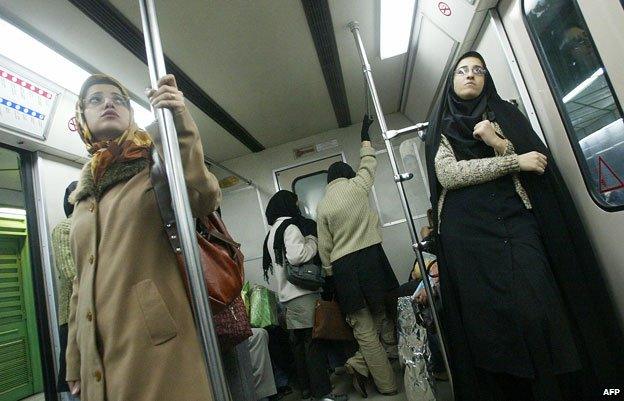
Iran's 1979 revolution may have put an ayatollah in charge - but for women it had plenty of positive side-effects... in education, in the workplace, and even in the home, discovers Amy Guttman during a ride on the Tehran underground.
My guide Farah, a tall, slender woman in her late 30s, wears jeans and a simple manteau - the mandatory robe women must wear in public, covering neck to knee. Her long, straight black hair is tucked beneath her headscarf, but visible as it coils at her neck.
We're heading to Tajrish Bazaar, in north Tehran, to explore 10 different kinds of dried plums, and other goodies. We choose the metro - Farah for its convenience, and I, for a chance to go underground in Tehran, because it provides a picture of the city most tourists never see.
It's mid-morning. Women and men sit separately, but the rule relaxes during busy times, like now. We, along with a few other women, clasp our hands around a pole, standing next to men, young and old in the air-conditioned, modern carriage. Two stops later, and about 20 commuters fewer, segregation happens naturally - women at one end, men at the other, still within view, but separate.
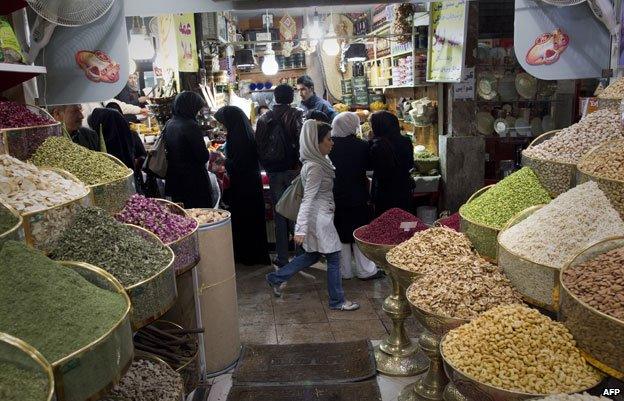
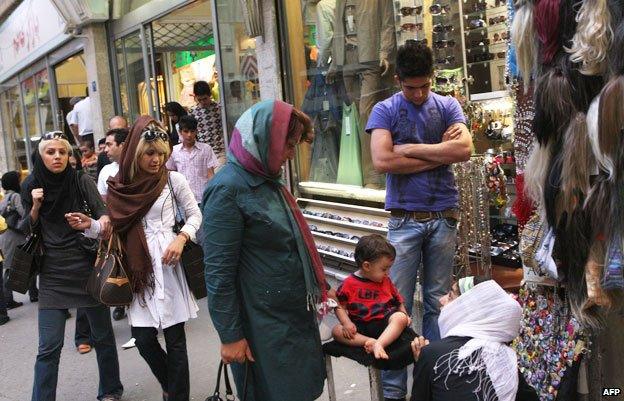
A handful of fashionable girls admire their own reflections in the window. They wear tight leggings under their brightly coloured robes, pushing back headscarves and boundaries. We find seats next to a group of conservative women dressed in black cloaks called chador. They're nothing like the other women I have met, a sisterhood of outspoken opinions, most of them liberal.
"We are a nation with one language," Farah says, "divided in two - traditional and modern."
Even as we speak in English, the anonymity of London's underground is absent. The curiosity within the metro car is mutual. Women, and men, watch us intently, faces full of question marks. Who are these two conspiring women and what are we discussing?
Farah talks of the major changes Iranian women have experienced in the last 30 years, while I imagine the morning commute back home… a sea of heads face-down in tablets, others dozing to iTunes lullabies. On Tehran's metro, I'm getting a spontaneous, unprompted lesson about gender equality in Iran.
Farah tells me it all began, not with imports from the West, but with the 1979 revolution. A confluence of access, education and a bad economy created a society where women now have independence, careers and husbands happy to help around the house with chores and children.
The revolution, Farah says, was very good for women.
"The revolutionists supported women coming out of their homes to demonstrate. They used women to show their strength, but they never anticipated these women also believed in their right to exist outside the home," Farah remembers.
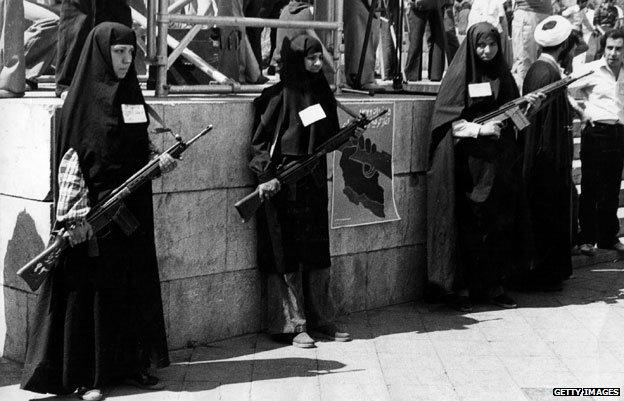
Iran's genies were let out of the bottle. The same genies have gone on to become active members of theological schools and hold positions as judges and engineers. "I don't care what they spread, radical or fundamental, whether I believe in it or not, they have a voice, it makes me happy," Farah says proudly.
There's no greater evidence of women in the workplace, than where we're sitting, surrounded by women on their way to work. It's another outcome the Ayatollah hadn't expected, but with Iran's economy battered by the revolution, women had no choice but to join the workforce.
"It forced men to acknowledge that their wives could go out and earn money," Farah says. Growing up, Farah only remembers affluent families allowing girls to work outside the home. Now, she says, "Nearly all boys prefer to marry a girl who has a permanent job and good salary. Often the women work harder, and longer hours than their husbands, so they do more of the housework - cleaning and preparing meals."
A timely initiative helped change the game for Iranian women. In 1982, just three years after the revolution, the government realised the existing education system was insufficient, and wasn't available to average Iranians. It also wasn't providing essential skills.
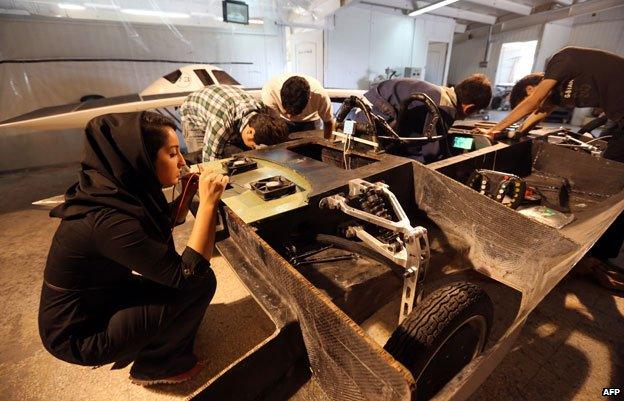
A student at Azad university works on the electrics of a solar-powered car
So, the government established Azad University. The non-profit, national network of institutions, with branches in large cities, small towns and even villages, provided girls from the middle and lower classes access to education they'd never had before.
"These girls, who like me, were the first in their families to go to university, they are teaching their children equality, because they have grown up with it themselves," Farah says. It inspired competence, and confidence. I ask Farah what she studied at university.
"Women's studies, of course," she answers with a smile.
Women, Farah says, now outnumber men in their pursuit of graduate degrees, something that has created a societal problem. Most Iranian women won't dream of dating men who aren't their intellectual equal.
There are no musicians busking on Tehran's metro, instead, a man walks up and down the carriage selling kitchen utensils to women too busy to shop.
As we approach Tajrish station, there are no takers. Presumably, if these women need a new sponge, or dustrag, their husbands will go out and buy them.
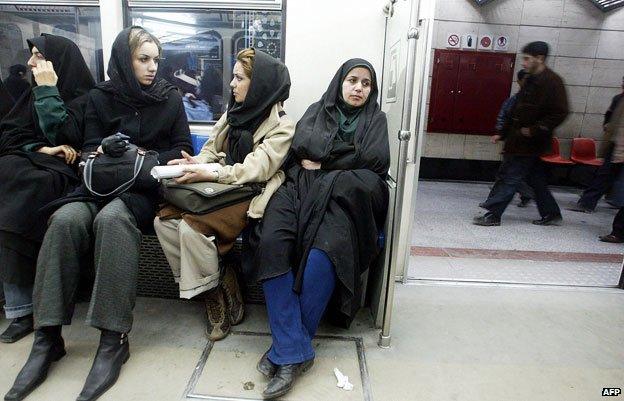
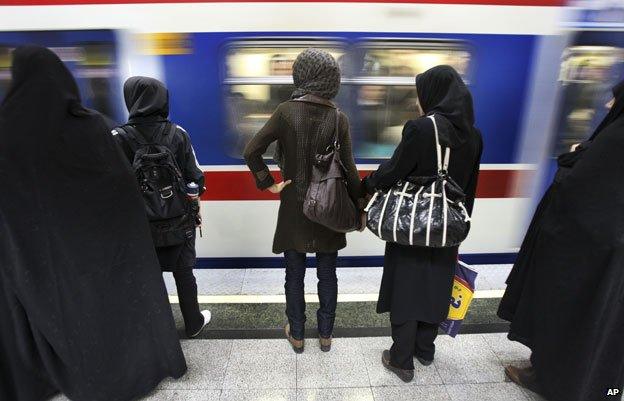

The Magazine in Iran
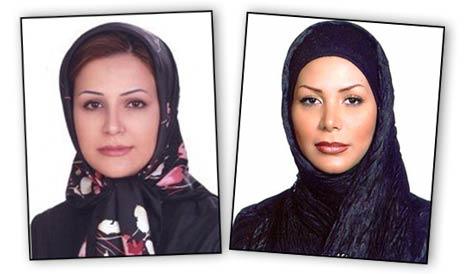
In June 2009, a woman was shot dead in a demonstration in Tehran. Neda Agha-Soltan became the face of the Iranian protest movement - except that it was not her face to begin with, but the face of university teacher Neda Soltani. Neda Soltani explains how the mix-up ruined her life.

How to listen to From Our Own Correspondent, external:
BBC Radio 4: Saturdays at 11:30 and Thursdays at 11:02 GMT
Listen online or download the podcast.
BBC World Service: At weekends - see World Service programme schedule or listen online.
Subscribe to the BBC News Magazine's email newsletter to get articles sent to your inbox.